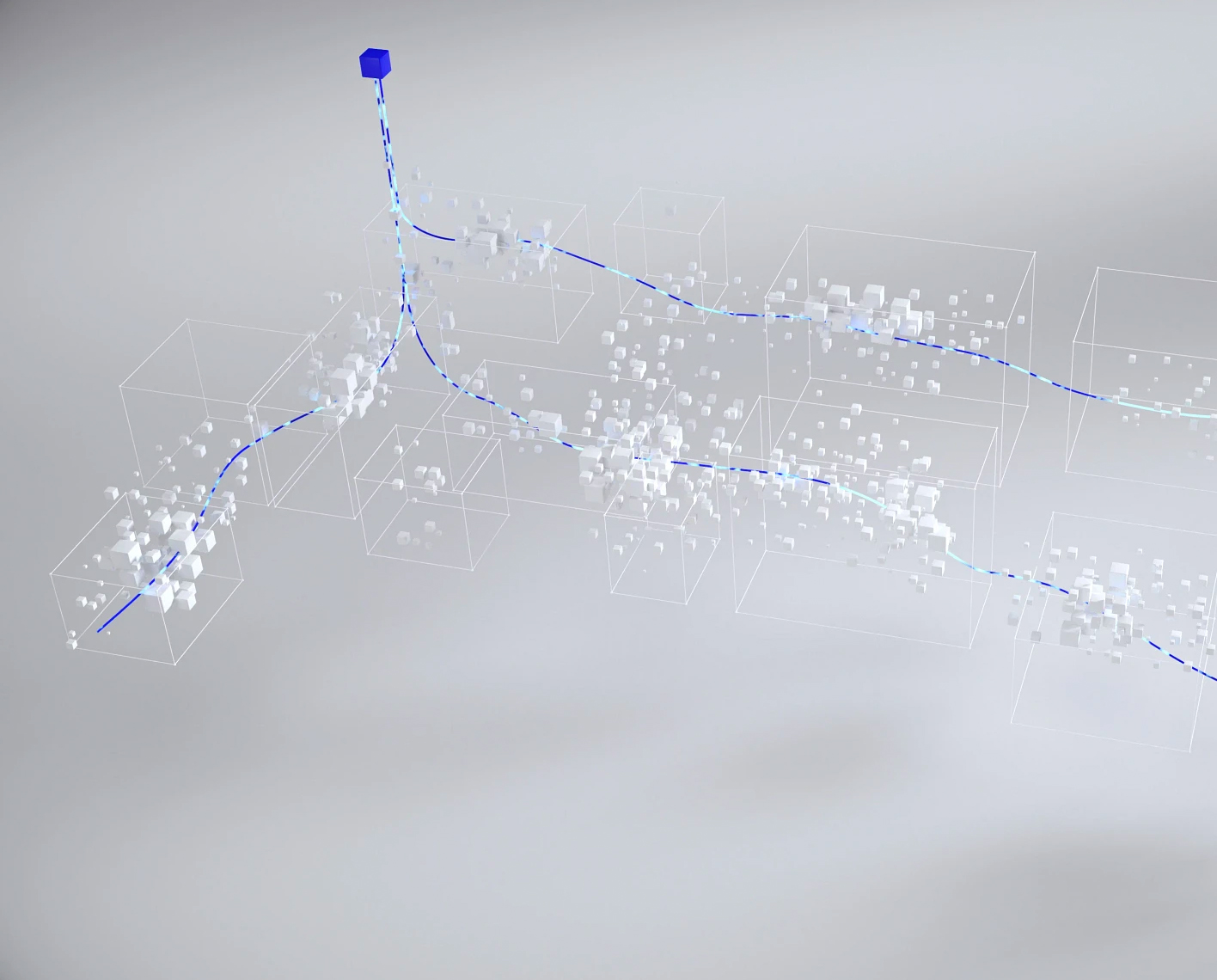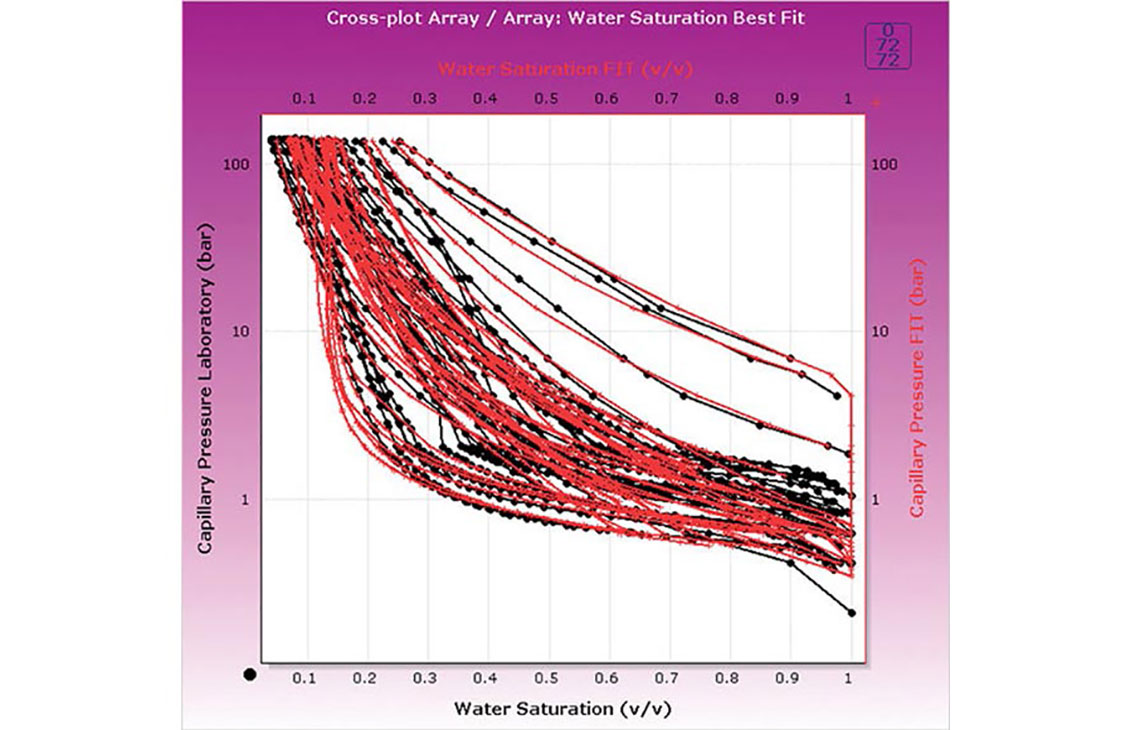Techlog Fluid Contact
Manage compartmentalization in complex reservoirs—incorporate geological, reservoir engineering, and petrophysics data into multiple zonation schemes, resolved in measured depth and true-vertical depth.

Raw Material
The Techlog Fluid Contact module allows the input of multiple zonation schemes in which to incorporate information from geology (layering, structure, faults from a 3D Earth model, etc.), reservoir engineering (initialization regions from a simulator), and petrophysics (fluid codes, net reservoir intervals, fluid levels, and gradients from the Formation Pressure module).
Process
The depth data of these multiple inputs is resolved in measured depth and TVD (true vertical depth). This can be within a single wellbore or across multiple wellbores, to identify compartments within the reservoir as seen through well data. A new Techlog data entity has also been created: 'fluid contact related to a hydraulic zone'. This data entity allows the management of multiple contacts within wells, for example hydraulic zones may be used explicitly to control calculation workflows in the Quanti and Formation Pressure modules.
Views
A new dock window tool, the Contact Manager, improves the visualizing and editing of one or more contacts within a project. The Contact Manager allows users to display contacts in plots for visual comparison across wells and insert fluid levels in stratigraphic zonations for fluid-specific calculations such as summaries.

Output
The main Fluid Control output is a table of minimum, most likely, and maximum depths of each fluid contact between pairs of fluids. Information for each “initialization region” or reservoir compartment is separately reported for ease of transfer into external models. The output contact dataset is ready to be transferred directly to the Petrel subsurface software using the related plug-in.

NExT Techlog training courses
NExT offers a comprehensive training program to support users of the SLB software, plugins, and other software products.
In this section
-

Techlog Fluid Contact
Manage compartmentalization in complex reservoirs—incorporate geological, reservoir engineering, and petrophysics data into multiple zonation schemesManage compartmentalization in complex reservoirs—incorporate geological, reservoir engineering, and petrophysics data into multiple zonation schemes.
-

Techlog Formation Pressure
Analyze your formation pressure dataThe graphical tools in the pretest interpretation phase enable easy quality control of the raw pressure versus time data to generate a single dataset.
-

Techlog Saturation-Height Modeling (SHM)
Integrate core-to-log data in your saturation-height workflow using set of solutions for saturation-height modeling in both the log and core domainsIntegrate core-to-log data in your saturation-height workflow using set of solutions for saturation-height modeling in both the log and core domains.



